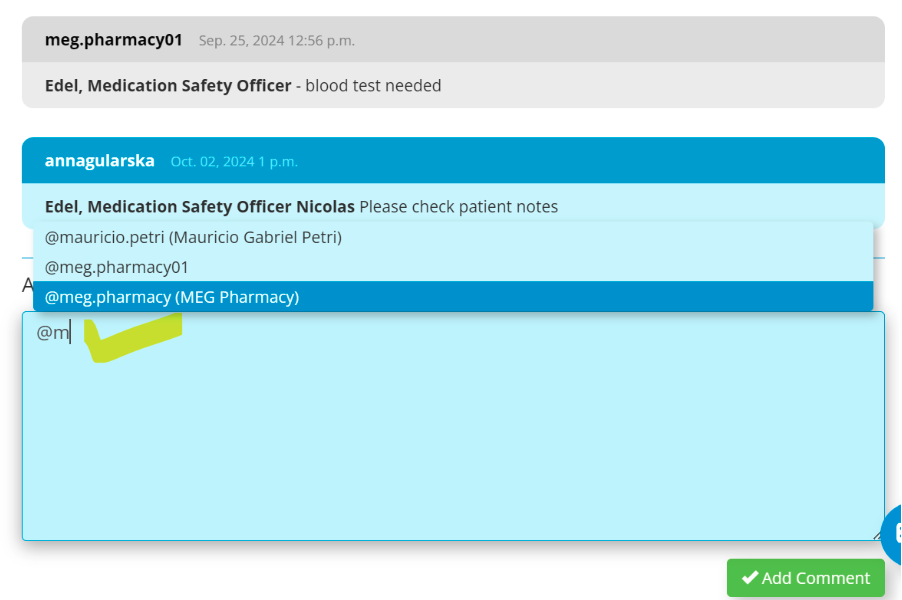Paulina & Mauricio from the MEG team at the SECA Conference
At the recent SECA Conference in Gran Canaria—an annual event dedicated to advancing healthcare quality, safety, and efficiency through knowledge sharing and innovation—the University Clinic of Navarra in Spain shared an inspiring story. Their focus was on patient safety and quality management innovation. Faced with the challenges of conducting thorough internal audits while maintaining high standards of patient care, the clinic turned to MEG—a digital platform specialising in healthcare quality and safety management—to overhaul its approach.
In a presentation led by Mauricio Petri, a healthcare quality expert at MEG, and Juana Labiano, Director of Quality Service at the clinic, the audience learned how digital transformation can fundamentally reshape safety practices in healthcare. The clinic's adoption of MEG allowed for streamlined audit processes, real-time insights, and the reinforcement of a culture centred on safety and continuous improvement.
Here's a closer look at their transformative journey and how MEG became a key ally in enhancing patient safety through smarter audits.
The Challenge: Traditional Audit Methods Limiting Efficiency
Before implementing MEG, the University Clinic of Navarra used Google Drive-based questionnaires to collect audit data. This method, though functional, required intensive manual effort and resulted in significant delays. Preparing reports took up to 37 hours per audit, with summaries sent out only twice a year—in June and December. This delay meant that insights from audits often weren’t available until months after data collection, limiting the clinic's ability to act on real-time issues. It was clear that a faster, more efficient system was needed.
The Solution: MEG’s Real-Time Digital Transformation
MEG, launched in 2016, is a cloud-based healthcare quality, risk and compliance platform with a strong presence in over 22 countries and multi-language support. Designed to assist quality and safety programs in hospitals, MEG was the perfect solution for the University Clinic of Navarra’s audit transformation. Mauricio explains:
“The pandemic highlighted the need for digital transformation, especially in patient safety areas. MEG’s ecosystem supports healthcare providers in transitioning to faster, more accurate audit processes.”
When the clinic partnered with MEG, they began the transition by restructuring their audit questionnaires and automating report generation, which helped cut report preparation time from 37 hours to just 7—an impressive 80% reduction. This shift allowed the team to conduct audits more frequently, contributing directly to a stronger focus on patient safety and quality of care.
Digital Audit Form (example only)
Key Benefits of MEG in Action
MEG brought three significant benefits to the clinic's auditing process:
Time Efficiency: The drastic reduction in report preparation time allowed the quality team to shift focus to other high-value activities and perform more audits annually.
Visual and Concise Reporting: MEG’s reports use intuitive “RAG” colour coding (red, amber, green) to show compliance levels, enabling healthcare professionals to identify performance areas at a glance.
Real-Time Feedback: With MEG, reports can now be sent out almost immediately after audits, keeping insights fresh and relevant for healthcare teams.
Juana, the Director of Quality Service at the University Clinic of Navarra, shares the impact:
“What used to take us 37 hours now takes just 7, which represents an 80% reduction in preparation time. This means we can deliver feedback almost immediately, keeping our safety culture active and engaged.”
Real-World Impact: Hand Hygiene and Beyond
One of the clinic’s key focus areas is hand hygiene, critical in preventing infection. With MEG, audit reports now visually display hand hygiene compliance across departments and by professional category, pinpointing areas for improvement. The colour-coded reports allow healthcare workers to quickly understand where standards are met and where immediate action is needed.
“Instead of waiting six months, we can now send reports at the right time, ensuring the feedback is relevant and actionable,” Juana adds.
Sample ‘Hand Hygiene’ audit report using MEG’s colour-coded format for clear visual representation.
Building a Culture of Safety
Beyond technical improvements, MEG has enhanced the clinic’s safety culture by ensuring that all staff, from frontline workers to administration, are aware of their role in patient safety. Real-time reports and immediate feedback keeps patient safety at the forefront of daily operations. According to Juana:
“MEG has not only made our audits more efficient but has strengthened our organisation’s commitment to a culture of safety.”
Conclusion: A Step Forward in Patient Safety and Quality Care
With MEG, the University Clinic of Navarra has taken a significant step toward digital transformation in patient safety, optimising time and resources while continuing to promote a safe and high-quality environment for all. By optimising time and resources, MEG allows healthcare professionals to focus on what truly matters—providing a safe and high-quality environment for patients.
80% Time-Saving on Audit Preparation
With MEG’s automated report generation, the clinic reduced report preparation time from 37 hours to just 7 hours—a remarkable 80% time savings. This efficiency allows the quality team to reallocate valuable time toward other essential quality improvement activities, fostering a more agile and responsive audit system.
Increased Audit Frequency with Automated Scheduling
Automated scheduling and faster report turnaround allow the clinic to conduct audits more frequently, moving from a biannual to a more regular schedule. This increased frequency enables the clinic to monitor compliance continuously, catching and addressing potential safety issues before they escalate.
Enhanced Safety Culture Across the Organisation
Real-time feedback from MEG keeps audit results fresh and actionable, empowering staff to immediately see areas of strength and improvement. This approach has deepened the clinic’s commitment to a safety-first culture, where all team members—from frontline workers to management—are more aware and engaged in upholding patient safety standards daily.
As healthcare continues to evolve, digital tools like MEG provide essential support in meeting the growing demands of patient safety and quality care, paving the way for a more efficient, responsive, and proactive healthcare system.































